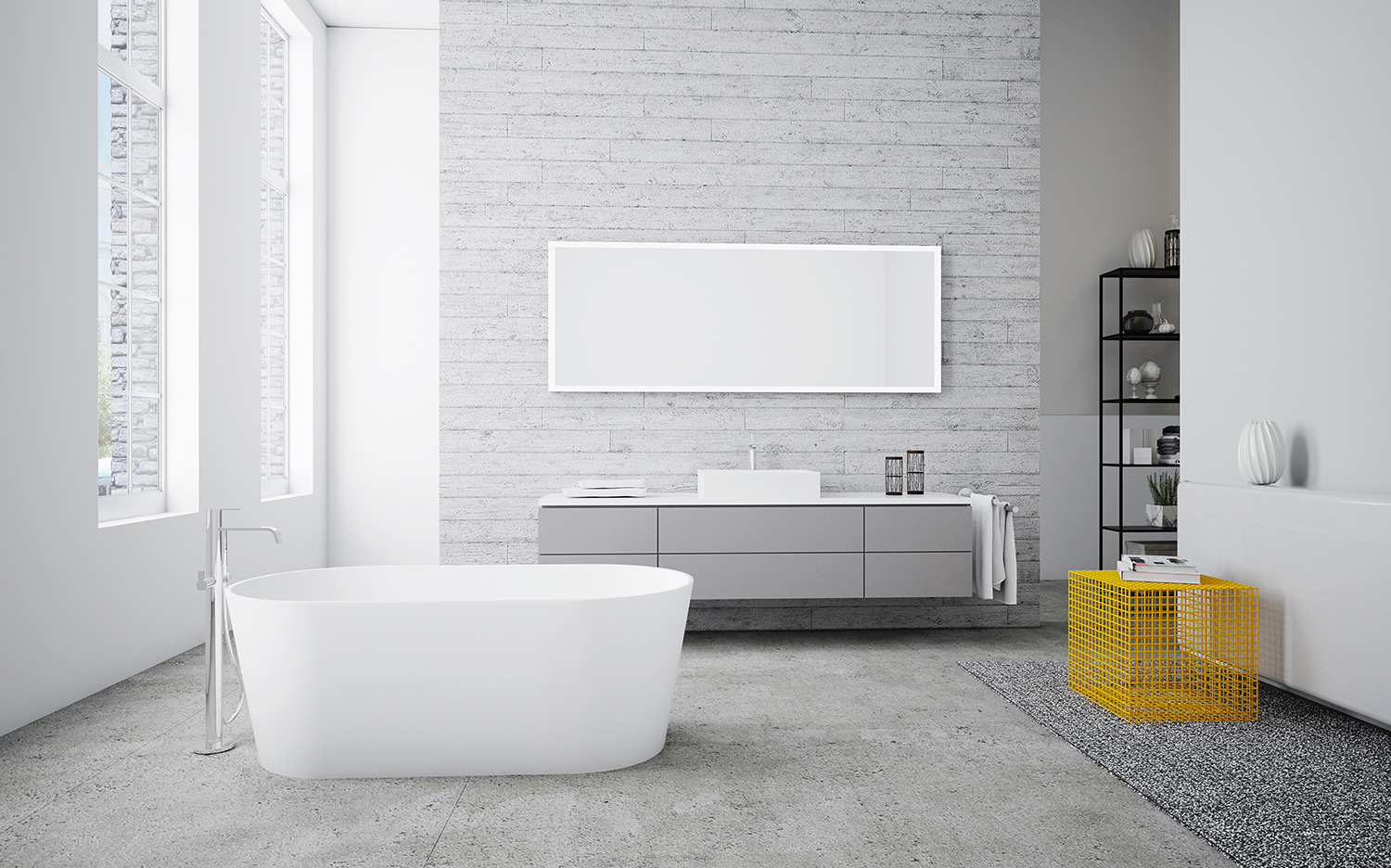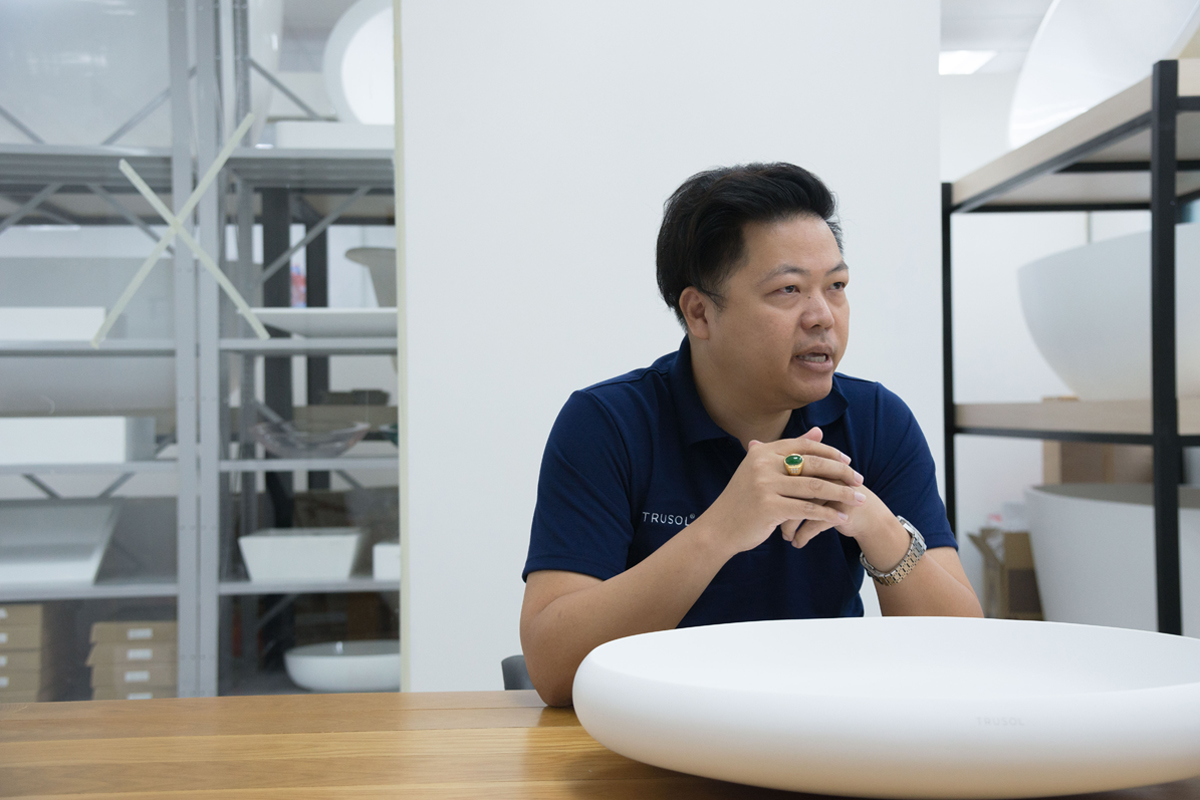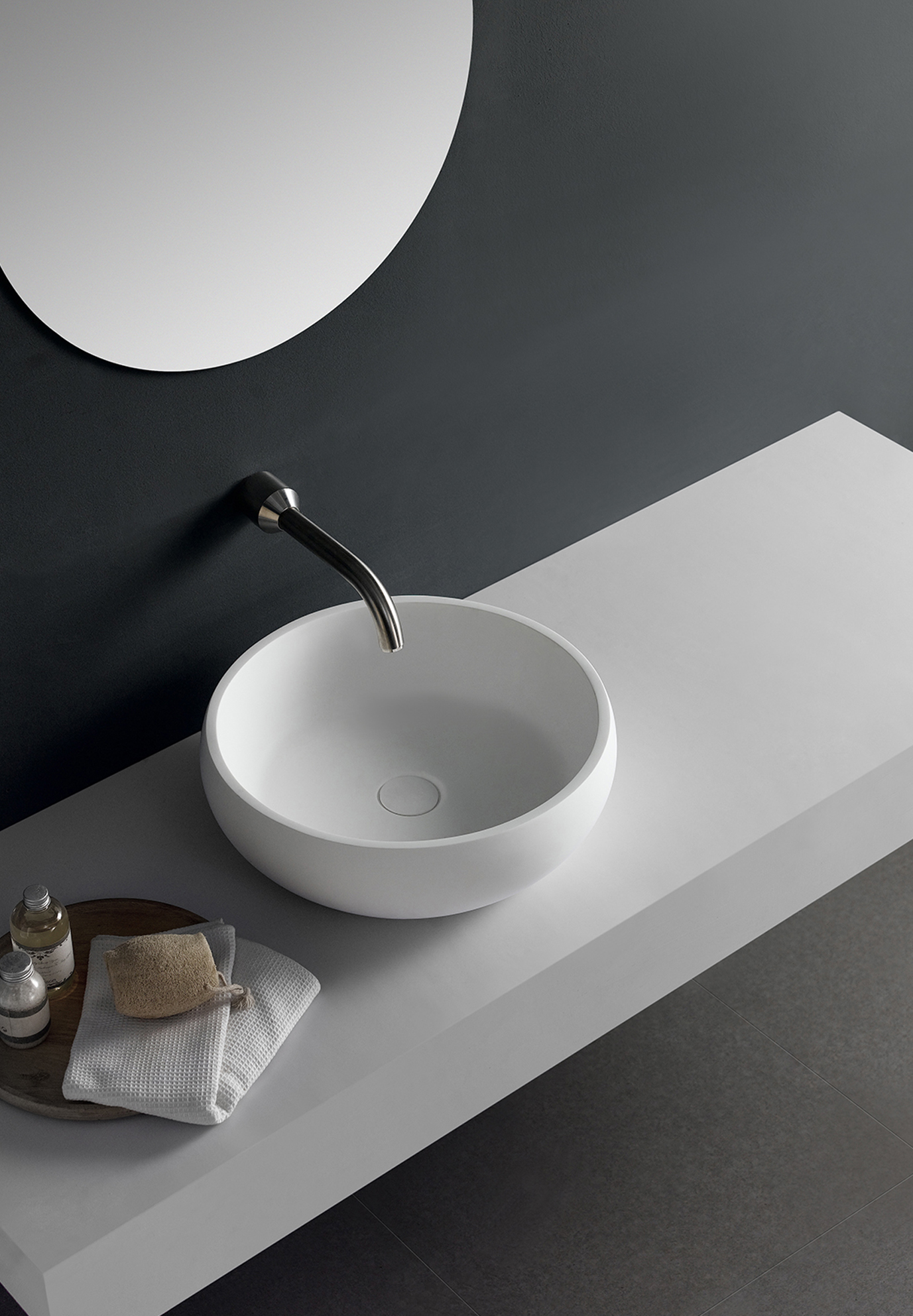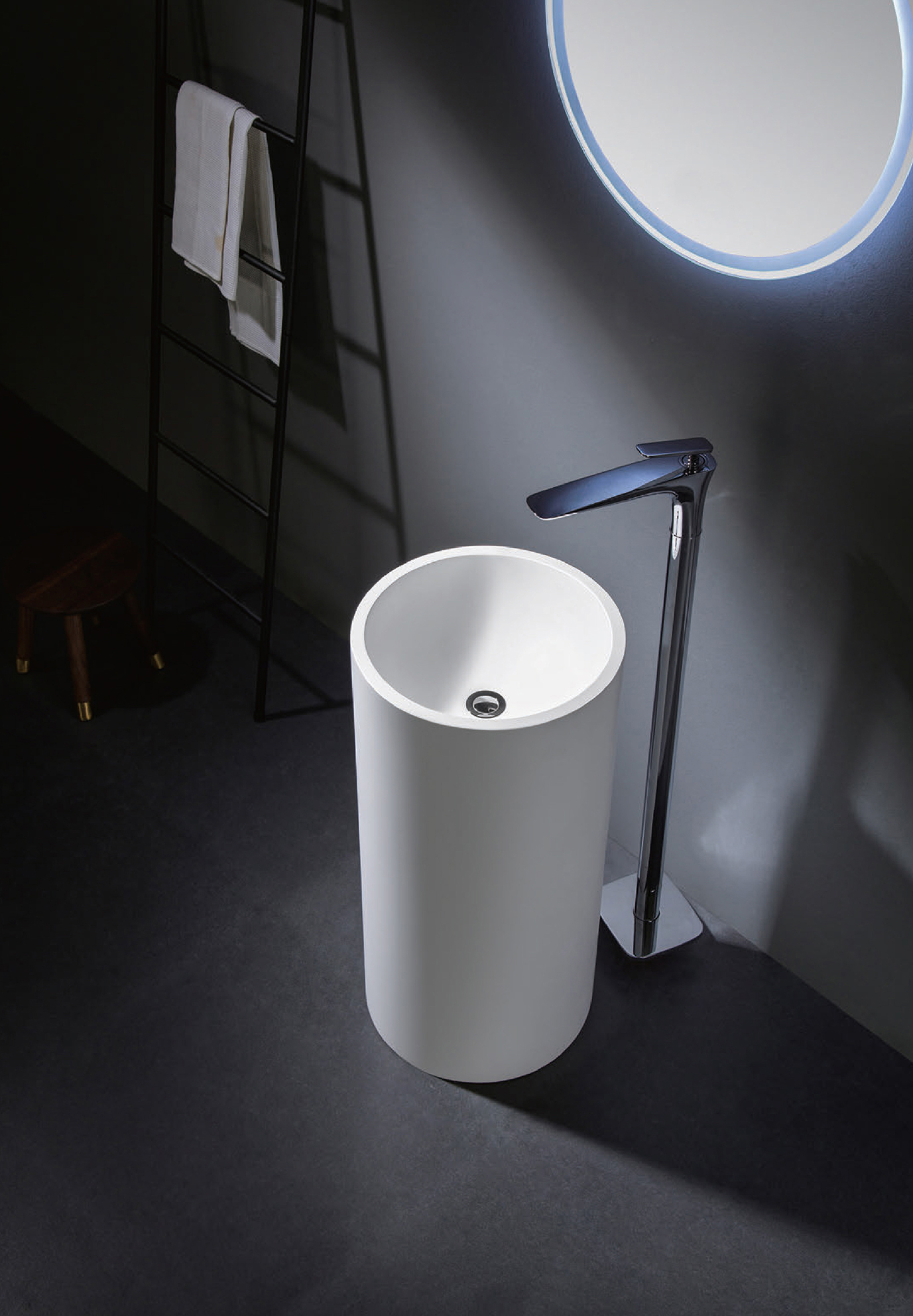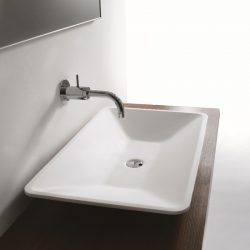WHAT MAKES TRUSOL CONTINUALLY AND SUSTAINABLY GROW IN THAILAND’S BATHWARE INDUSTRY OVER THE PAST NINE YEARS, LET’S FIND OUT IN THIS CONVERSATION WITH TEERAWAT THAMVARANONT
TEXT & PORTRAIT: NAPAT CHARITBUTRA
PHOTO COURTESY OF TRUSOL
“ดีไซเนอร์ตื่นเต้นอยู่แล้ว ถ้าเขาได้ออกแบบอ่างล้างหน้า อ่างอาบน้ำ ได้เองตามที่เขาต้องการ คือคุณออกแบบยังไงก็ได้ เราสามารถผลิตมันออกมาให้ตามความต้องการของเขา” ธีรวัฒน์ ธรรมวรานนท์ เล่าถึงวิธีการทำงานของ TRUSOL ที่จะว่าไปแล้วต้องถือว่าล้ำหน้ากว่าแบรนด์สุขภัณฑ์อื่นๆ อย่างเห็นได้ชัด เพราะที่อื่นอาจจะไม่ยืดหยุ่นต่อความต้องการของดีไซเนอร์ขนาดนี้ อย่างไรก็ตาม กว่าที่ TRUSOL แบรนด์สุขภัณฑ์สัญชาติไทยแท้ จะเดินทางมาถึงจุดที่มีศักยภาพระดับนี้ได้นั้น (ปีนี้ถือเป็นปีที่ 9 แล้ว) พวกเขาต้องผ่านบททดสอบทางการทำธุรกิจมาไม่น้อย
ธีรวัฒน์ มีแบ็คกราวน์เป็นภูมิสถาปนิกมาก่อน โดยจบการศึกษาจากคณะสถาปัตยกรรมศาสตร์ จุฬาลงกรณ์มหาวิทยาลัย เขาทำงานออกแบบอยู่ที่สิงค์โปร์และเซี่ยงไฮ้กว่า 6 ปี ก่อนจะย้ายตามเจ้านายเก่าไปทำงานที่เวียดนาม ณ เมืองโฮจิมินห์ซิตี้อีกกว่า 4 ปี “ผมกลับมาไทยเพราะว่าเหตุผลทางครอบครัว และคิดว่าจะทำอะไรต่อดี เพราะตอนนั้นรู้ตัวแล้วว่าผมเริ่มอิ่มตัวกับงานออกแบบแล้ว” จุดพลิกผันที่ทำให้ ธีรวัฒน์ ผันตัวมาทำธุรกิจเกิดขึ้นตอนที่เขาทำงานอยู่เวียดนาม ได้ไปคลุกคลีกับสถาปนิกในฮ่องกงที่ทำงานอยู่ในวงการโรงแรม “ตอนนั้น ผมมีหน้าที่ต้องพาผู้บริหารกลุ่มนี้ไปทานข้าว ประชุม ทุกสัปดาห์เป็นเวลา 4 ปี เราคลุกคลีกันจนรู้จักนิสัยใจคอ จนกระทั่งวันนึงก็มีคนในกลุ่มนั้นบอกผมว่าบุคลิกของคุณนั้นไม่ใช่นักออกแบบ ความคิดก็ไม่ใช่ แต่คุณมีความเป็นผู้ประกอบการสูงมาก ถ้ามีลู่ทางที่เมืองไทยก็น่าจะกลับมาทำธุรกิจที่เมืองไทย”
ด้วยคำแนะนำของผู้ใหญ่ในเครือข่ายที่ติดต่อกันระหว่างที่เดินทางไปมาสิงคโปร์ ฮ่องกง และเวียดนาม ธีรวัฒน์ เริ่มสำรวจทางเลือกต่างๆ ในการทำธุรกิจ จนอยู่วันหนึ่งเขาไปเจอช่องว่างทางการตลาดในวงการวัสดุสุขภัณฑ์เข้า “หนึ่งคือราคา สองคือดีไซน์ ผมคิดว่าดีไซน์สามารถสร้างความแตกต่างได้ ผมเลยเริ่มต้นง่ายๆ เลย คือการทำแคตตาล็อคขึ้นมา เดินถือตัวอย่างอ่าง แล้วก็เดินเข้าไปคุยกับซีอีโอของบริษัทสุขภัณฑ์เจ้าหนึ่งเลย” ครั้งนั้นเขาไม่ประสบความสำเร็จ อย่างไรก็ตาม ด้วยคอนเน็คชั่นที่เขามีกับนักออกแบบ เขาจึงได้โอกาสได้เข้าเสนอผลิตภัณฑ์กับโรงแรมแห่งหนึ่งในภูเก็ต “ไปถึงผมก็เอาอ่างไปวางบนโต๊ะให้เขาดู ปรากฏฝรั่งคนนั้นเขาชอบมาก แล้วเขาก็สั่งของผม ได้ออร์เดอร์แรกเป็นร้อยห้อง”
ช่วงนั้นคือช่วงปี 2012 หลังเหตุการณ์สึนามิที่มีโครงการเกิดขึ้นราวกับดอกเห็ดซึ่งทำให้เขาได้โปรเจ็คต์ที่ภูเก็ตติดต่อกันหลายโปรเจ็คต์ตามมา อาทิ โครงการโรงแรม Point Yamu by COMO ที่ภูเก็ต งานโครงการ Bluepoint ที่ป่าตอง งานแรกของ TRUSOL ในกรุงเทพฯ คือโปรเจ็คต์ใหญ่กับสตูดิโอสถาปนิก Somdoon Architects นั่นคือโครงการ Siamese Ratchakru “ช่วง 3 ปีแรก ถือว่ายากมากสำหรับผม มีทั้งช่วงขึ้นและลงสลับกัน มีอุปสรรคนานัปการ โชคร้ายที่สุดที่เจอมาคือของที่ผมสั่งมานั้นโดนไต้ฝุ่นพัดจมทะเลไปหมด แต่ผมก็ผ่านมาได้ ค่อยๆ เก็บเล็กผสมน้อยจนมาถึงวันนี้”
ตลอด 9 ปีที่ผ่านมา ลูกค้าของ TRUSOL ล้วนเป็นโรงแรมเครือใหญ่ๆ ไม่ว่าจะเป็น Grand Hyatt, Mercure, Sala, Como, Sixsenses, Sofitel โครงการห้างสรรพสินค้ามหาชนที่ใครๆ ก็ต้องเคยไป เช่น Central Embassy, Siam Discovery รวมไปถึงบริษัทอสังหาริมทรัพย์เจ้าใหญ่ๆ ในไทย หลายรายที่ได้เป็นลูกค้าของ TRUSOL เช่น แสนสิริ, อนันดา, พฤกษา ฯลฯ
“มีคนเคยบอกผมว่า สินค้าอย่างคุณนั้นขายไม่ได้ทุกที่หรอก เพราะมีดีไซน์ที่แตกต่าง และราคาสูง ผมก็ตอบกลับไปว่าถูกต้องแล้ว ผมไม่ได้หวังให้ทุกคนต้องชอบ TRUSOL แต่อยากให้กลุ่มที่ชอบนั้นชอบแบรนด์ของเรามากๆ จนเป็นแฟนคลับ เพราะเท่ากับว่าเรามีทิศทางการทำงานที่ชัดเจน” นี่คงเป็นประโยคที่สื่อถึงหลักการทำงานของแบรนด์ TRUSOL ได้เป็นอย่างดี
“แทนที่เราจะเข้าหาออฟฟิศออกแบบขนาดใหญ่ๆ ผมไปหาออฟฟิศเล็กๆ เพราะเขาต้องการผลงาน ต้องการความแตกต่าง และที่สำคัญคือเขาเปิดใจ” จุดยืนของ TRUSOL คือการซัพพอร์ทนักออกแบบให้ได้ทำในสิ่งที่ต้องการ “งานยากๆ อย่างอ่างล้างมือสีดำชิ้นเดียวผมก็ทำ ผมค่อยๆ ทำแบบนี้ไปเรื่อยๆ จนชื่อ TRUSOL เริ่มเป็นที่รู้จักมากขึ้นจากการบอกปากต่อปาก” โมเดลการทำงานของ TRUSOL คือการเป็นผู้ผลิตและติดตั้ง ธีรวัฒน์ขีดเส้นแบ่งไว้ชัดเจนว่า TRUSOL จะไม่เป็นผู้ออกแบบเพราะเขาเชื่อมั่นในศักยภาพของนักออกแบบไทยว่าทัดเทียมกับมาตรฐานนานาชาติ “แต่ถ้ามีลูกค้าเดินเข้ามาแล้วถูกใจอ่างที่ดีไซเนอร์ออกแบบไว้ ผมจะขายในราคา retail ซึ่งก็ค่อนข้างสูง เพราะผมอยากให้คนทั่วไป appreciate สุขภัณฑ์ชิ้นนั้นในฐานะงานออกแบบชิ้นหนึ่งของนักออกแบบไทย”

เทคนิคที่เป็นเอกลักษณ์ของ TRUSOL คือหินสังเคราะห์ ซึ่งเหตุผลที่ธีรวัฒน์เลือกวัสดุนี้เป็นวัสดุหลักของแบรนด์ก็ค่อนข้างเรียบง่ายทีเดียว นั่นคือหินสังเคราะห์เป็นวัสดุชนิดเดียวที่สามารถทำผิวด้านได้ อีกทั้งยังสามารถหล่อขึ้นรูปได้ทุกรูปทรงและควบคุมรายละเอียดได้อย่างแม่นยำ “สังเกตว่าเซรามิกหรืออะคริลิคที่เราเห็นทั่วไปมันจะไม่มีทางที่จะมีเส้นขอบที่ตรงเพราะมันเกิดจากการเผา อีกเรื่องหนึ่งซึ่งค่อนข้างจะเป็นข้อมูลทางเทคนิค คือ ความจริงแล้ว ดินในทวีปเอเชียไม่เหมาะกับการผลิตสุขภัณฑ์เซรามิกด้วยซ้ำ” ข้อดีอีกอย่างคือการไร้ซึ่งส่วนเหลือทิ้งในกระบวนการผลิต ธีรวัฒน์บอกกับ Work in Progress ก่อนจะเสริมว่า ความสมบูรณ์แบบของผลิตภัณฑ์ของ TRUSOL มาจากการใส่ส่วนผสมของหินอ่อนบดมากกว่าปกติเพื่อลดปริมาณเรซินซึ่งเป็นสาเหตุของการเสื่อมสภาพของผิวสุขภัณฑ์ ที่หลายๆ คนคงเจอมากับตัวว่าพอใช้ไปสักพักแล้วพื้นผิวสุขภัณฑ์จะเริ่มเหลือง
ในปัจจุบัน TRUSOL เริ่มย้ายฐานการผลิตจากต่างประเทศมายังประเทศไทยมากขึ้น จนกว่า 70% ของผลิตภัณฑ์นั้นถูกผลิตขึ้นในไทยทั้งสิ้น เพื่อตอบสนองความต้องการของตลาดได้ดียิ่งขึ้น (เพราะยอดขายสูงขึ้น) “สิ่งที่ท้าทายที่สุดตลอด 10 ปีที่ผ่านมาคือ การเป็นนักออกแบบที่ผันตัวเองมาทำธุรกิจ จุดแข็งของเราที่ได้มาจากการทำงานออกแบบคือ เราเข้าใจคน ซึ่งมันก็เป็นเรื่องเดียวกับการเข้าใจตลาด เรารู้ว่าคนต้องการอะไร ตลาดต้องการอ่างอาบน้ำอ่างล้างหน้าแบบไหน” จากในปี 2011 ที่หลายๆ คนกังขาว่า TRUSOL จะมีที่ทางในตลาดสุขภัณฑ์ซึ่งเป็นตลาดที่มีแบรนด์เจ้าใหญ่ๆ ครองอยู่ได้อย่างไร TRUSOL กำลังเติบโตไปในเส้นทางที่มั่นคง มีตลาดของตัวเองที่ชัดเจน ตอนนี้ผลิตภัณฑ์ของ TRUSOL ฝังตัวอยู่ในโครงการที่ได้รับรางวัลระดับนานาชาติหลายๆ โครงการ (หนึ่งในนั้น คือ โครงการ Y/A/O Residence โดย Octane Architects และล่าสุด คือ Little Shelter Hotel ที่จังหวัดเชียงใหม่ ที่ออกแบบโดย Department of Architecture) ไม่แน่ว่าใน 5-10 ปีข้างหน้า ระหว่างเดินเล่นอยู่ในห้าง หรือไปเที่ยวตามดีไซน์โฮเทลต่างจังหวัด เราอาจจะบังเอิญได้ล้างมือ หรือนอนแช่อยู่ในอ่างของ TRUSOL ก็เป็นได้

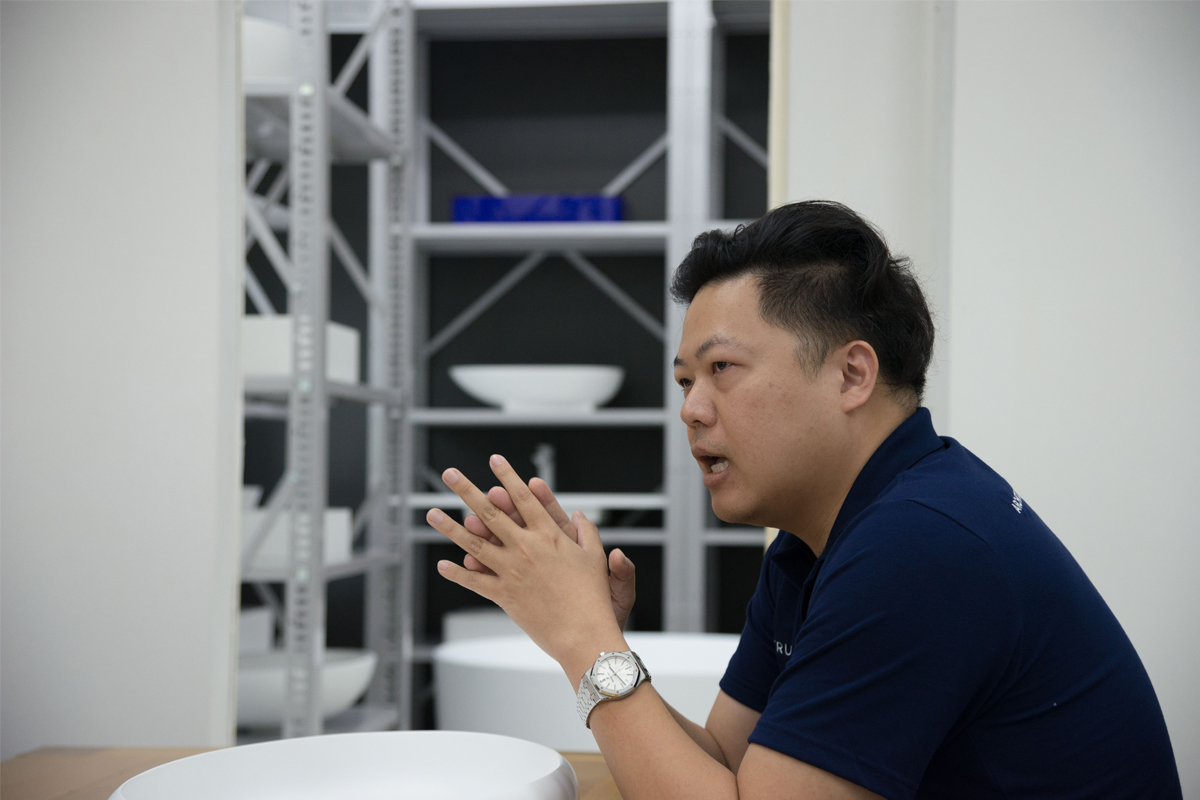
“Designers are always thrilled to be able to design a sink or a bathtub the way they want. Our manufacturing ability can render whatever design that is handed to us.” Teerawat Thamvaranont starts off his conversation with us about what TRUSOL’s business operation is really about. It’s a progressive approach, no doubt, way ahead of other sanitary ware brands in the market that may not be able to cater to designers’ demands and imaginative ideas, at least, not to this extent. But before this bona fide Thai brand journeyed to where it is today (now reaching its 9th year), several tests took place and many obstacles have been overcome.
With his background in landscape architecture, Thamvaranont, Chulalongkorn University’s Faculty of Architecture’s alumni, spent 6 years working for design studios in Singapore and Shanghai. Following his former boss’ invitation, he agreed for another relocation, spending another 4 years working in Ho Chi Minh City, Vietnam. “I came back to Thailand due to family-related reasons, and was really contemplating about what to do next, having realized that I might probably need a break from designing.” The turning point that drove Thamvaranont to start his business took place when he was working in Vietnam. It was during this time when he became acquainted with a group of Hong Kong-based architects who worked primarily in hotel design. “I was the one assigned to take this group of executives to meetings and meals on a weekly basis throughout the 4 years I was there. We became close and they got to know me quite well. ‘You don’t have the personality nor the mindset of a designer. But you have a very strong entrepreneurial trait. If there’s a way, you should find an opportunity to start a business in Thailand.’ This was what they told me.”
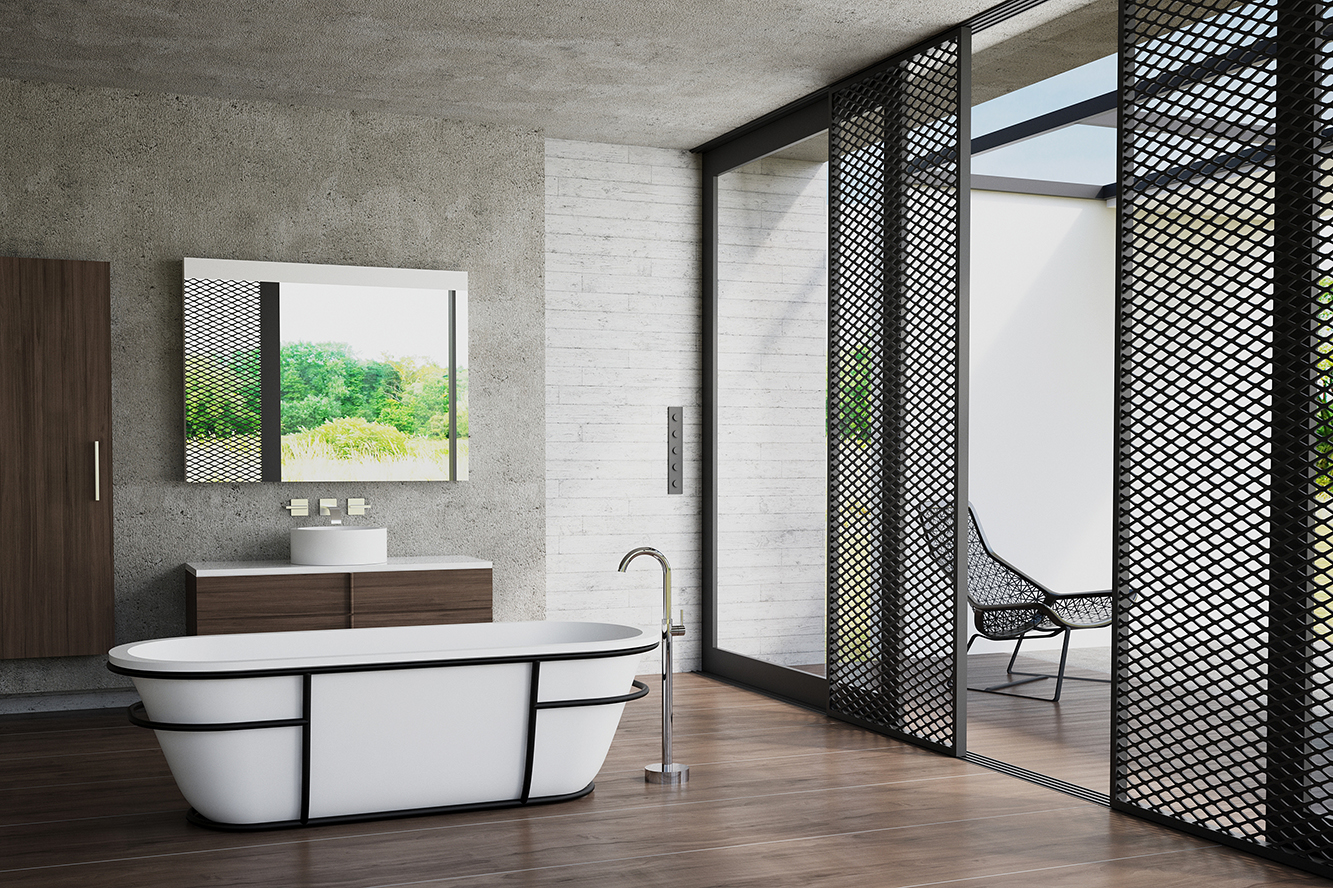
With the suggestions and advice from people he came to know through his professional connections when he was working and travelling back and forth between Singapore, Hong Kong and Vietnam, Thamvaranont started to look for possible business opportunities, and ended up finding a market gap in the bathware industry. “The first thing is the price, the second is the design. I think design is what makes the difference. I started off simply by creating a catalogue. I walked into a meeting with a CEO of a sanitary ware company, while carrying a prototype wash basin with me.” The meeting was unsuccessful. Nonetheless, with the connection he had developed with designers through the years, he finally had a chance to present his product to an investor of a hotel in Phuket. “I arrived at the meeting and placed the wash basin on the table. The foreigner who was the project’s owner loved it, and I got myself the first order for over a hundred rooms of that hotel.

That was back in 2012 after a Tsunami hit the Andaman coasts. The hotel business was flourishing again after the dust had settled with establishments recuperating from what the disaster had left behind. Thamvaranont’s TRUSOL was given more opportunities as a result, working on more projects in Phuket such as Point Yamu by COMO and Bluepoint condominium in Patong Beach before landing his first job in Bangkok with Siamese Ratchakru that had Somdoon Architects as the project’s architect. It was another big break. “The first three years were very difficult. There were rise and falls, and obstacles. The most unfortunate incident was when the order that was being shipped was sunken down to the ocean by a typhoon. But I got pass that, and picked up the pieces until TRUSOL is where it is today.”
Throughout the 9 years of its operations, TRUSOL’s clients include mega hotel chains from Grand Hyatt, Mercure, Sala, Como, Sixsenses to Sofitel, popular shopping malls in Thailand such as Central Embassy, Siam Discovery as well as leading Thai real estate development companies like Sansiri Development, Ananda Development and Pruksa Real Estate, etc.

“Someone told me that a product like mine wasn’t for everyone because the design is different and the price is high. My answer to the person was, you’re right. I don’t expect everyone to like TRUSOL. What I want is for a group of people to really like our brand to the point where they become our fans, our loyal customers. Because that proves the clear trajectory of where TRUSOL is heading.” Thamvaranont explains what seems to perfectly convey TRUSOL’s philosophy.
“Instead of approaching large scale design companies, I look for small design offices that want to create impressive projects and are looking for something different. Most importantly, they’re open-minded.” TRUSOL’s standing point is supporting designers to enable them to do what they want. “Something like one single piece of a black wash basin, which is difficult to do, I managed to do it. I built the brand one project at a time, and people have gradually heard more about us through word of mouth.” TRUSOL’s business model is based on its role as a manufacturer and installer. Thamvaranont draws a clear line that TRUSOL will not take the role of a designer because he believes in Thai designers and their potential to create works of international standard. “If a client walks in and likes a wash basin that was designed by one of the designers we work with, I would sell it, but at a rather high retail price. I want people to appreciate that particular piece of sanitary ware as a work of design, created from the talent of a Thai designer.”

One of TRUSOL’s most unique techniques is the use of synthetic stone. The reasons Thamvaranont chooses the material as one of the brand’s primary materials is quite simple—its physical attributes that can deliver a matte surface and the fact that it can be casted into any desired form with the details precisely controlled and rendered. “Notice how most ceramic and acrylic you see today cannot give the final detail of a neat, straight edge because it has to go through the baking process. Another issue, which is quite technical is, the earth in Asian regions isn’t actually ideal as a material for ceramic sanitary ware products.” Thamvaranont told Work in Progress that another upside of synthetic stone is the zero waste production it is able to offer before adding that the impeccable quality of TRUSOL’s products is a result of the higher proportion of ground marble added to the mixture. It reduces the use of resin, which normally causes of the product’s surface to turn yellow after a certain period of usage.
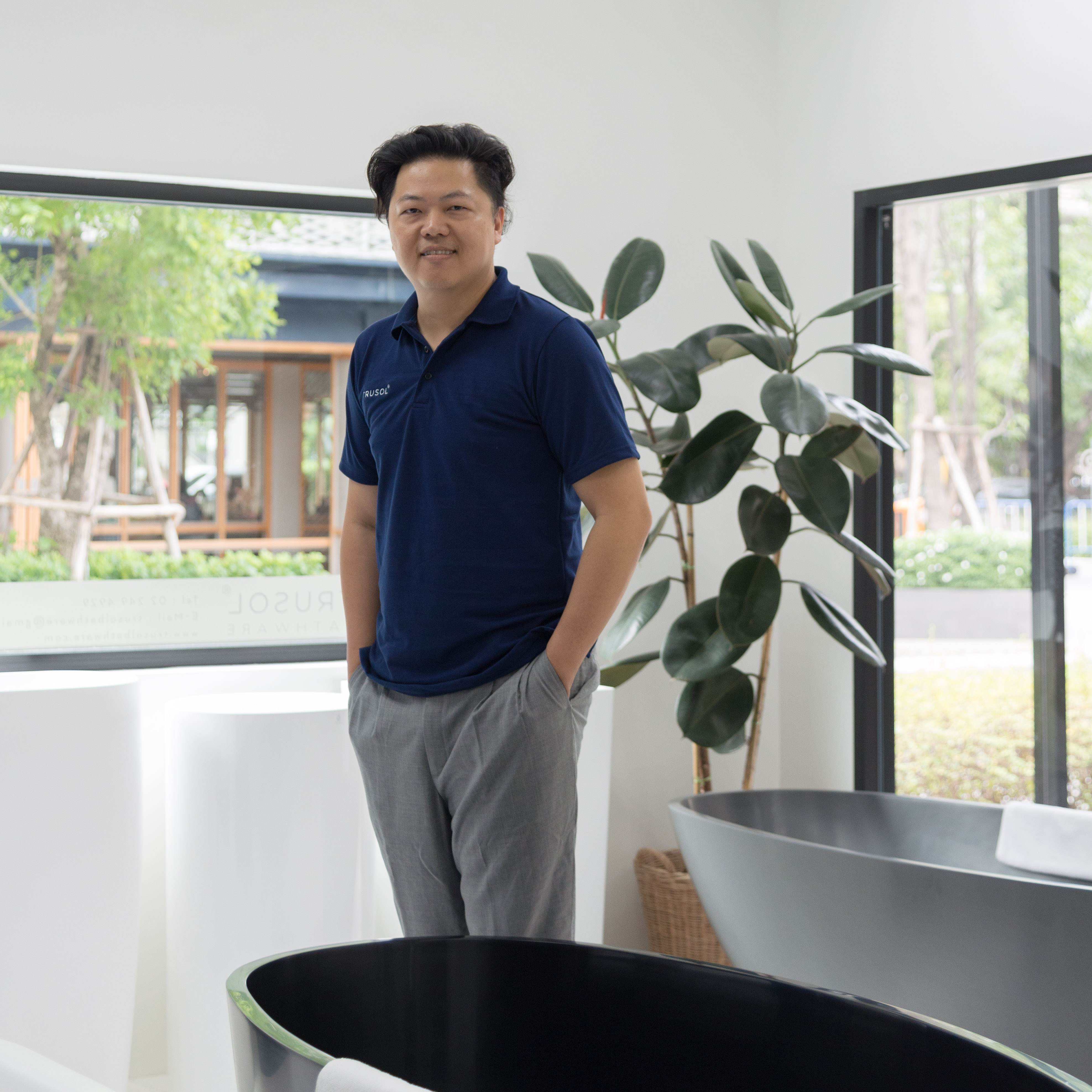
TRUSOL is now relocating its production base with 70% of its products which are now being made in Thailand. It allows the brand to better accommodate the market’s demands (judging from the higher sales number). “The most challenging thing throughout the past ten years is being a designer who started my own business. My strength as a design practitioner is that I understand people, which is practically the same thing as understanding the market. I know what people want, what kind of products the market is looking for.” Since 2011 when many still had doubt about TRUSOL’s position in the sanitary ware market, where all the big players were dominating the field, TRUSOL is growing on its own stable path with its own market and clientele. TRUSOL’s products found their ways into internationally award-winning projects (among them are Y/A/O Residence by Octane Architects and Little Shelter Hotel in Chiang Mai, Thailand that has Department of Architecture in charge of the design). It’s very likely that in the next 5-10 years, when we will be strolling around in shopping malls, checking in to design hotels somewhere and we will find ourselves washing our hands in TRUSOL’s wash basin or enjoying a nice bath in TRUSO’s bathtub.


